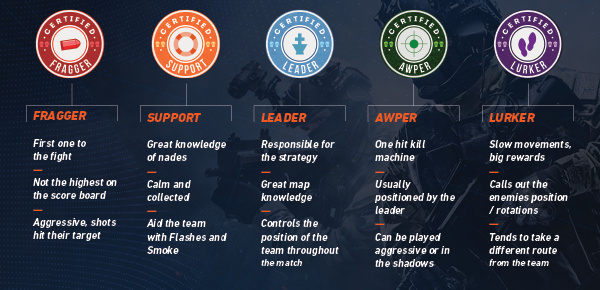Bodrum Escapes: Your Guide to Luxury and Leisure
Explore the best of Bodrum with exclusive insights and tips for an unforgettable experience.
From Fragging to Leading: The Journey of a CS2 IGL
Discover the transformation from fragging player to tactical leader in CS2. Unleash your potential with insider tips and epic gameplay insights!
From Noob to IGL: What It Takes to Lead a CS2 Team
Transitioning from a noob to an IGL (In-Game Leader) in Counter-Strike 2 (CS2) requires a blend of skill, strategy, and strong communication abilities. An aspiring IGL must first develop a deep understanding of game mechanics, maps, and competitive strategies. This includes familiarizing oneself with gameplay tactics, understanding the nuances of various weapons, and recognizing the strengths and weaknesses of different teams. It's crucial to analyze match footage and learn from experienced players to build a solid foundation of knowledge.
Once the fundamentals are established, an IGL must focus on honing their leadership qualities. Effective communication is key; an IGL needs to convey strategies clearly and inspire their teammates to execute them. Team dynamics play a significant role in a team's success, which means fostering trust and camaraderie among players is essential. Additionally, being adaptable to changing situations in a match, and making quick decisions under pressure, are critical traits that define a successful IGL. Ultimately, this journey from noob to leader is about continuous improvement and learning from every experience.

Counter-Strike is a highly popular first-person shooter game that emphasizes team-based gameplay and strategy. Players choose to play as either terrorists or counter-terrorists, completing objectives such as bomb planting or hostage rescue. For enthusiasts looking to enhance their gaming experience, cs2 glock skins can offer a unique aesthetic to their in-game weaponry.
Top 5 Strategies for Effective In-Game Leadership in CS2
Effective in-game leadership is crucial for success in CS2, as it can significantly influence team performance and overall enjoyment of the game. To start, communication is key; ensure that you maintain clear, concise, and constant dialogue with your teammates. This includes sharing important information such as enemy positions, strategy adjustments, and individual player statuses. A strong leader also fosters a positive atmosphere, encouraging players to stay calm under pressure and to support one another. Additionally, being adaptable to shifting game dynamics is vital; a good leader must assess ongoing situations and modify tactics accordingly to exploit the opponent's weaknesses.
Another effective strategy for in-game leadership in CS2 is to establish roles and responsibilities within the team. Clearly assigning roles such as entry fragger, support, and AWPer helps players understand their specific duties, ensuring a cohesive strategy. Furthermore, conducting regular debriefs after matches can solidify team cohesion and provide valuable insights on what worked well and what needs improvement. Lastly, never underestimate the power of leading by example; consistently displaying a high level of skill and sportsmanship can inspire teammates to elevate their own play, creating a positive feedback loop of improvement.
What Makes a Great IGL? Lessons Learned from My CS2 Journey
Being an effective in-game leader (IGL) in CS2 is a nuanced role that extends beyond merely strategizing during matches. The most successful IGLs cultivate a strong rapport with their teammates, fostering an environment of trust and communication. In my journey, I learned that the foundation of a great IGL lies in their ability to understand team dynamics. This includes recognizing individual strengths and weaknesses, which allows for tailored strategies that maximize team performance. Consistent feedback, both positive and constructive, plays a pivotal role in maintaining morale and adapting tactics as needed.
Moreover, a great IGL must also be adaptable and resourceful. The fast-paced nature of CS2 demands quick decision-making and the ability to pivot strategies mid-match. In my experiences, I've found that incorporating lessons from past games, whether victories or losses, is crucial. These lessons can help shape a flexible game plan. For instance, during a recent tournament, we faced an unexpected enemy strategy that we hadn’t prepared for. By quickly analyzing our options and implementing a backup plan, we managed to turn the tide in our favor. Thus, adaptability, communication, and a deep understanding of the game are key takeaways that can mark the difference between a good IGL and a great one.